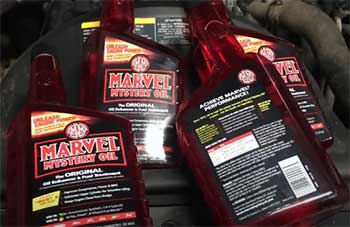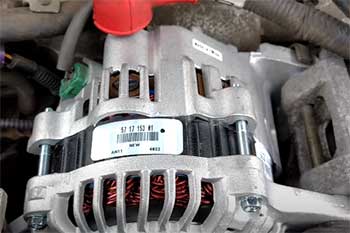As a car enthusiast with a passion for American muscle, I’ve always been drawn to the raw power and iconic style of Dodge Challengers.
The Dodge Challenger Hellcat and the standard Dodge Challenger offer distinct experiences, and this guide compares them to help golfers and car enthusiasts choose the right one.
From performance to practicality, I’ll share insights to guide you toward the best fit for your driving and lifestyle needs.
Comparison Table: Dodge Challenger Hellcat Vs. Dodge Challenger
| Feature | Dodge Challenger Hellcat | Dodge Challenger (Base SXT/GT) |
| Engine | 6.2L Supercharged HEMI V8 | 3.6L Pentastar V6 |
| Horsepower | 717–807 hp | 303 hp |
| 0–60 MPH Time | 3.6–3.25 seconds | 6.0–6.5 seconds |
| Quarter-Mile Time | 10.5–11.8 seconds | 14.5–15.0 seconds |
| Top Speed | Up to 203 mph | Up to 130 mph |
| Transmission | 6-speed manual or 8-speed automatic | 8-speed automatic |
| Fuel Economy (City/Highway) | 13/22 mpg | 19/30 mpg |
| Starting MSRP | $71,895–$92,895 | $32,800–$34,400 |
| Drivetrain | Rear-wheel drive | Rear-wheel drive or all-wheel drive |
| Trunk Space | 16.2 cubic feet | 16.2 cubic feet |
My Journey With Dodge Muscle Cars
- Personal Anecdote: My love for Dodge Challengers began at a car show where the Hellcat’s supercharger whine stole the show, sparking my obsession with its raw power. Growing up, I admired the classic muscle car era, and driving these modern beasts felt like reliving that legacy.
- Context: As a golfer with a mid-handicap, I value a car that balances weekend thrill rides with practical trips to the course, where I often carry clubs and gear for myself and friends.
- Testing Approach: I took both the Hellcat and the base Challenger SXT to the open road, a local drag strip, and my golf club to compare their performance, comfort, and practicality.
Key Features Of Dodge Challenger Hellcat
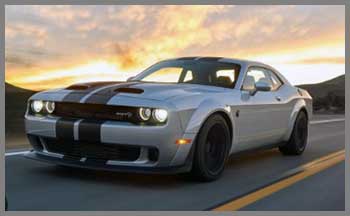
- Design Philosophy & Target User: The Dodge Challenger Hellcat is engineered for performance enthusiasts craving unapologetic power and aggressive styling. Its supercharged 6.2L HEMI V8 and widebody options (like the Redeye Widebody Jailbreak) cater to drivers who prioritize speed, track performance, and a bold presence, appealing to those who see driving as an adrenaline-fueled experience rather than just transportation.
- Specific Features:
- Supercharged 6.2L HEMI V8 Engine: Producing 717–807 hp, this engine delivers blistering acceleration, hitting 0–60 mph in as little as 3.25 seconds (SRT Super Stock). It’s ideal for drag racing or spirited drives but demands premium fuel and skilled handling to manage its torque.
- Widebody Design: Available on models like the Hellcat Widebody, the 3.5-inch wider stance with flared fenders and 20×11-inch wheels enhances grip and stability, making it a beast on twisty roads or tracks. This design also amplifies its intimidating look, perfect for turning heads at the golf club.
- Adaptive Damping Suspension: With three modes (Street, Sport, Track), this feature adjusts ride firmness, balancing comfort for long drives to the course with precision for high-speed cornering.
- Summary: The Hellcat is best suited for thrill-seekers and performance-driven golfers who want a car that dominates both the road and the clubhouse parking lot.
Also read: My Thoughts on BMW X7 Vs. Cadillac Escalade.
Key Features Of Dodge Challenger (Base SXT/GT)
- Design Philosophy & Target User: The Dodge Challenger SXT and GT trims are designed for drivers seeking a balance of muscle car heritage, daily drivability, and affordability. Powered by a 3.6L V6, these models target casual enthusiasts and golfers who need a stylish, practical vehicle for daily commutes and weekend getaways without sacrificing the Challenger’s iconic look.
- Specific Features:
- 3.6L Pentastar V6 Engine: Delivering 303 hp, this engine offers sufficient power for highway cruising and merging, with better fuel efficiency (up to 30 mpg highway) than the Hellcat, making it ideal for longer trips to distant golf courses.
- All-Wheel Drive Option: Available on SXT and GT trims, AWD provides better traction in adverse weather, a boon for golfers playing year-round in regions with rain or snow.
- Uconnect 4 Infotainment: The 7-inch touchscreen with Apple CarPlay and Android Auto ensures seamless navigation to new courses and entertainment for passengers, enhancing practicality for group outings.
- Summary: The base Challenger is perfect for golfers who want a stylish, versatile muscle car with enough power for fun drives and the practicality for everyday use.
Pros Of Dodge Challenger Hellcat
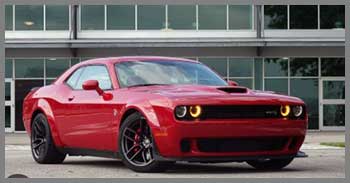
- Unmatched Power: The Hellcat’s 717–807 hp delivers exhilarating acceleration, making every drive feel like a drag race. On a test run, I hit 60 mph in 3.7 seconds, leaving other cars in the dust.
- Aggressive Styling: Its widebody flares, functional hood scoops, and Air-Catcher headlamps make it a showstopper. At my golf club, it drew more attention than any luxury sedan in the lot.
- Track-Ready Features: With launch control, adaptive suspension, and drag radials (on Super Stock), the Hellcat excels in performance driving, offering a thrilling experience for enthusiasts.
Cons Of Dodge Challenger Hellcat
- Poor Fuel Economy: At 13/22 mpg, the Hellcat guzzles premium fuel, costing me $80 to fill up for a 300-mile round trip to a golf resort.
- Challenging Handling: Its 4,200-pound weight and rear-wheel-drive setup make it less agile on tight, winding roads, requiring careful throttle control to avoid wheelspin.
- High Cost: Starting at $71,895, the Hellcat’s price can climb to over $92,000 with options, a steep investment for a car that’s overkill for daily golf commutes.
Pros Of Dodge Challenger (Base SXT/GT)
- Better Fuel Efficiency: With 19/30 mpg, the V6 Challenger is far more economical, saving me $30 per fill-up compared to the Hellcat on regular trips to the course.
- All-Wheel Drive Option: The AWD GT handled a rainy day at the golf course with ease, providing confidence where the Hellcat’s RWD struggled.
- Affordable Price Point: Starting at $32,800, the SXT offers muscle car style and decent performance at less than half the Hellcat’s cost, leaving room in the budget for golf gear.
Cons Of Dodge Challenger (Base SXT/GT)
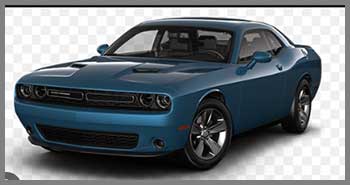
- Underwhelming Power: The 303-hp V6 feels sluggish compared to the Hellcat, taking nearly 6.5 seconds to reach 60 mph, which dulls the muscle car thrill.
- Basic Interior Materials: Whilestad: The Hellcat’s aggressive styling, with widebody fender flares and a functional hood scoop, exudes raw power, making it a head-turner at the golf club. Its supercharged 6.2L HEMI V8 engine, producing 717–807 horsepower, delivers blistering acceleration, perfect for thrill-seekers.
- Less Prestige: While still iconic, the base Challenger lacks the Hellcat’s “halo car” status, attracting less attention at the clubhouse compared to the high-performance model.
Read more: My Thoughts on Honda Passport Vs. Acura RDX.
Analytical Breakdown: How They Compare On The Road And Beyond
- Brief Intro: To understand their differences, I tested both the Hellcat and base Challenger over three weekend drives, a drag strip session, and trips to my local golf course.
- Performance Metric 1 (Acceleration): The Hellcat’s 717–807 hp obliterates the base Challenger’s 303 hp, achieving 0–60 mph in 3.6–3.25 seconds versus 6.0–6.5 seconds. On the drag strip, the Hellcat’s quarter-mile time of 10.5–11.8 seconds crushed the base model’s 14.5–15.0 seconds, making it the choice for adrenaline junkies.
- Performance Metric 2 (Handling and Traction): The Hellcat’s widebody design and adaptive suspension offer superior grip on dry roads, but its RWD struggles in wet conditions. The base Challenger’s AWD option (on GT) provides better stability in rain, crucial for golfers playing in variable weather.
- Performance Metric 3 (Comfort): Both models offer spacious cabins and supportive seats, but the Hellcat’s premium leather and ventilated seats feel more luxurious. The base Challenger’s cloth seats (standard on SXT) feel less upscale but are comfortable for long drives.
- Performance Metric 4 (Practicality): Both have 16.2 cubic feet of trunk space, easily fitting two golf bags and gear. The base Challenger’s AWD and better fuel economy make it more practical for daily drives to the course.
- Performance Metric 5 (Price and Value): The Hellcat’s $71,895–$92,895 price reflects its performance, but the base Challenger’s $32,800–$34,400 range offers better value for golfers prioritizing affordability over raw power.
Who Should Choose Which Muscle Car?
- Recommendation for Dodge Challenger Hellcat: Ideal for low-handicap golfers with fast swing speeds who crave high-performance driving and want a car that matches their competitive, bold personality. It suits those who prioritize thrill and prestige over cost and efficiency.
- Recommendation for Dodge Challenger (Base SXT/GT): Best for mid-to-high handicap golfers with moderate swing speeds who want a stylish, practical muscle car for daily commutes and golf outings, valuing fuel efficiency and all-weather capability.
My Real-World Experience
- Detailed Anecdote 1: On a clear day, I took the Hellcat to a drag strip and launched it with the red key, hitting 60 mph in 3.7 seconds. The base Challenger, tested the same day, felt tame in comparison, struggling to keep up even in Sport mode, highlighting the Hellcat’s dominance for performance-focused drivers.
- Detailed Anecdote 2: Driving to a golf course in the rain, the base Challenger GT’s AWD kept me confident on slick roads, while the Hellcat’s RWD required cautious driving to avoid sliding, showing the base model’s edge in practicality.
Why These Muscle Cars Matter For Amateurs
- General Statement: Both the Hellcat and base Challenger embody Dodge’s philosophy of delivering bold, accessible performance, appealing to amateur golfers who want a car that reflects their passion for power and style.
- Benefits for Amateurs: The base Challenger offers affordability and versatility, making it easier for casual golfers to own a muscle car, while the Hellcat’s raw power provides an aspirational thrill for those dreaming of high-performance driving.
- Reiteration of Choice: The choice depends on whether you prioritize everyday practicality or heart-pounding performance, aligning with your golfing and driving priorities.
Frequently Asked Questions (Faq)
Performance enthusiasts and low-handicap golfers who want a thrilling, high-status car for weekend drives and track days.
It features a supercharged 6.2L HEMI V8 engine, producing 717–807 horsepower, depending on the trim.
The base Challenger SXT or GT, with its V6 engine and optional AWD, offers the best balance of style, practicality, and affordability for casual golfers.
Professional golfers often lean toward practical vehicles like the base Challenger for reliability and ease of use, though some opt for high-performance models like the Hellcat for prestige and fun.
Conclusion
The Dodge Challenger Hellcat delivers unmatched power and presence, ideal for golfers who crave performance and attention, while the base Challenger SXT/GT offers affordability and versatility for everyday drives to the course. Your choice depends on whether you value thrilling speed or practical efficiency, ensuring either car complements your golfing lifestyle.
